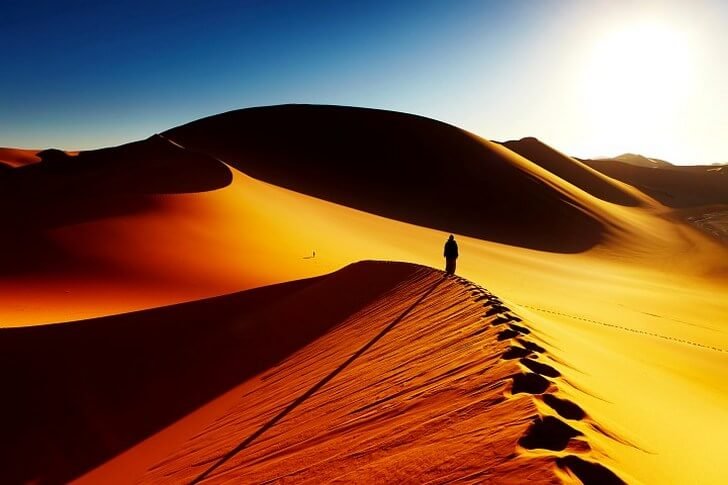Algeria is the picturesque nature of the North African coast, the ancient ruins of great civilizations, the “residence” of the harsh Sahara, in a word, a colorful and vibrant country. Here, tourists are waiting for the beaches of the Mediterranean Sea, the oriental bazaars of Constantine, architectural monuments of Roman, Carthaginian, Arab and Turkish cultures.
Historically, the majority of foreign tourists to Algeria are French, as the country was previously a French colony. The flow of travelers from other states is not yet very high due to periodic unrest in the region. It is better to go to Algeria as part of an organized tour. The host party accommodates guests in several hotels of world chains. To visit the Sahara, visit the Berbers or go to the mountains, you will need the accompaniment of local guides.
What to see in Algiers?
The most interesting and beautiful places, photos and a brief description.
- Old Kasbah
- City of Constantine
- Cathedral of Our Lady of Africa
- Basilica of Saint Augustine in Annaba
- Tlemcen Cathedral Mosque
- Mosque of Ketshava
- Monument of glory and martyrdom
- Mzab Valley
- Tipaza
- Royal Mausoleum of Mauritania
- The ancient Roman city of Timgad
- Cala Beni Hammad
- Ancient Roman city Dzhemila
- Fort Santa Cruz
- Atlas mountains
- Giurgiura National Park
- Tassilin-Ajer Plateau
- Ahaggar Highlands
- Thermal springs Hammam Mescutin
- Sahara Desert
Old Kasbah
The historical part of the country's capital city of Algiers. Kasbah in translation from the local dialect means "fortress". This is the very heart of the city, where old houses, mosques and Ottoman palaces hide in narrow alleys and small squares. The city arose on the ruins of the Phoenician city of Ikosium. In 1992, the Kasbah was included in the UNESCO list. About 70 thousand people permanently live here, many buildings are in disrepair.

City of Constantine
Considered the pearl of the country, the locals call Constantine "the city of hanging bridges." The city has an unusual location - it is located on a plateau, which was formed as a result of washing out the rock from the rocks by the Rummel River. The El Kantra Bridge, the Devil's Bridge and the Falling Bridge, thrown over deep and already dry riverbeds, connect the old city with its new part.
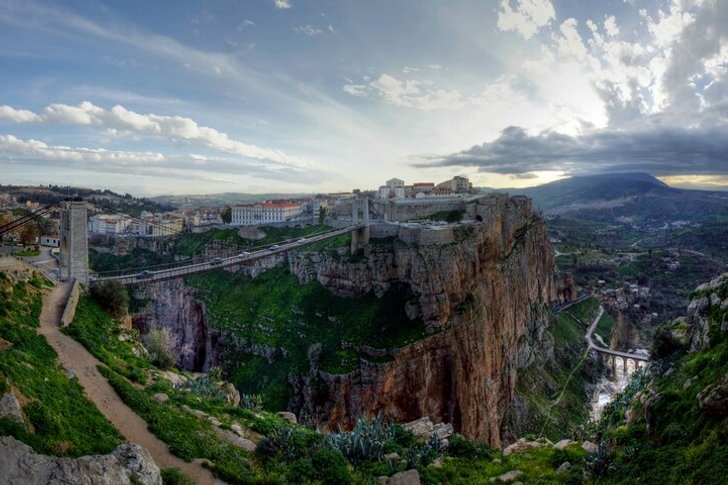
Cathedral of Our Lady of Africa
A cultural monument of Algeria and a functioning Catholic church. The cathedral was built in 1872 by the French architect Jean Eugene Fromageau. During construction, emphasis was placed on the neo-Byzantine style with Roman elements, which was popular in France at that time. The temple is located on a rock near the sea in the northern part of the city of Algiers. A statue of the Mother of God is installed in the courtyard, calling for prayers for Christians and Muslims.
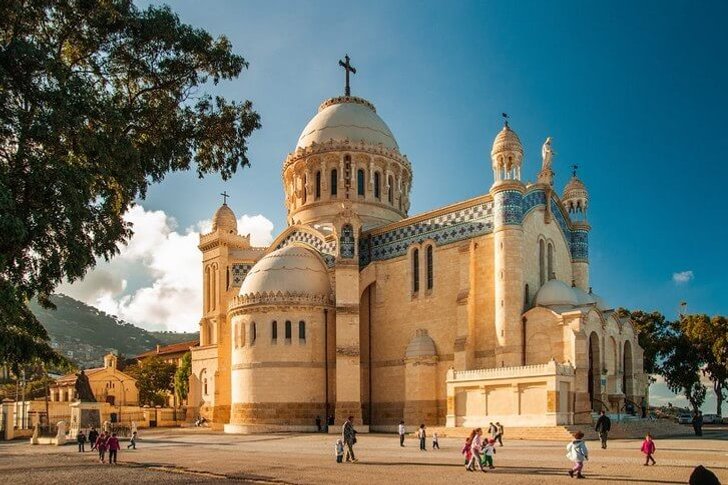
Basilica of Saint Augustine in Annaba
Another Catholic church in Algiers, erected at the behest of the former French colonizers. The basilica appeared in 1881. It was restored in 2010 with funds from the Pope and the French government and with the approval of the Algerian government. The relics of Bishop Annaba Augustine, who defended the city from the invasion of conquerors in the 5th century, are kept on the territory of the temple. and heroically died during the siege.

Tlemcen Cathedral Mosque
Located in the city of Tlemcen and is one of its main attractions. The first buildings on the site of the mosque appeared in the 11th century. In the XII century. the temple was expanded at the behest of the heir of Sultan Ali ibn Yusuf from the Almoravid dynasty. Another expansion took place in the thirteenth century. by order of Sultan Jaghmorasen, who is considered the founder of the mosque. In different periods, the university and the court, known throughout the Islamic world, were located on the territory.
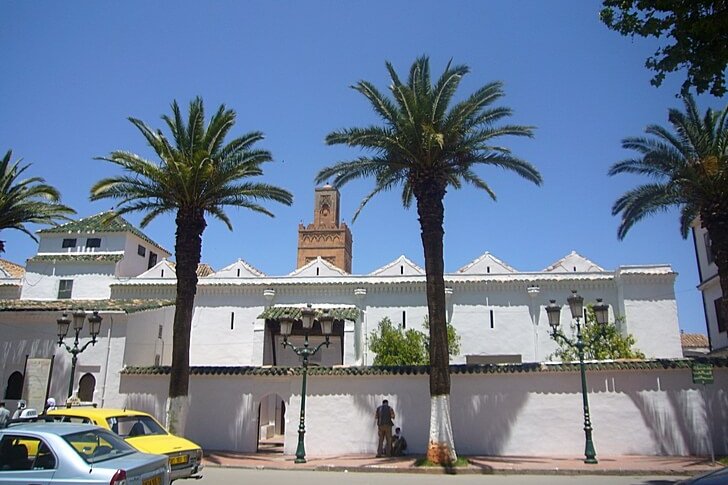
Mosque of Ketshava
One of the main metropolitan attractions. It was built in the Byzantine and Moorish style at the beginning of the 17th century. During the French colonization, it was converted into the Catholic Cathedral of St. Philip. Several valuable historical relics are kept inside the mosque. During the construction, black and white marble was used, elements of this material have been partially preserved and have come down to our days.
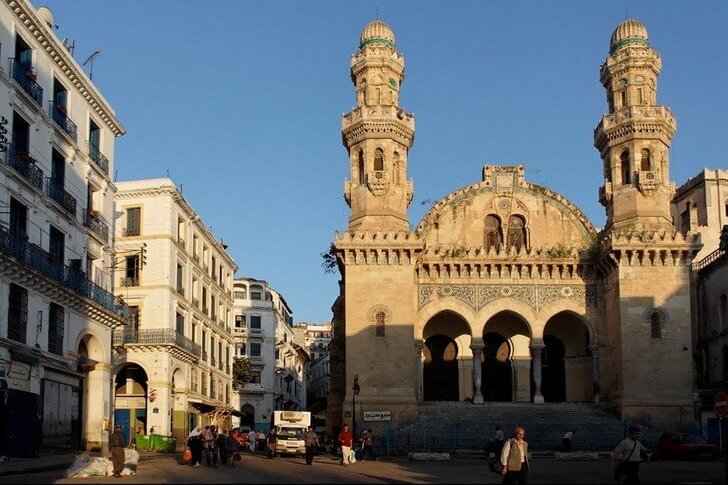
Monument of glory and martyrdom
Monument in honor of the twentieth anniversary of Algeria's independence from France. It is a stele approximately 92 meters high, it is often called the "Algerian Eiffel Tower". The monument is clearly visible from anywhere in the capital. The construction elements symbolize the palm leaves soaring upwards, which at the top converge into a dome. An eternal flame burns under the dome. At the foot of the mountain stand soldiers-defenders, personifying the resilience of the Algerian people.

Mzab Valley
The area located around five ancient Algerian cities, formed by the 10th century. These settlements, called "ksar", have survived to this day in almost unchanged form. The valley is a magnificent monument of architecture and history of the country. The buildings are made of white or cream stone, inside the towns there are labyrinths of streets, small markets - real museums of the life of local residents, mosques.
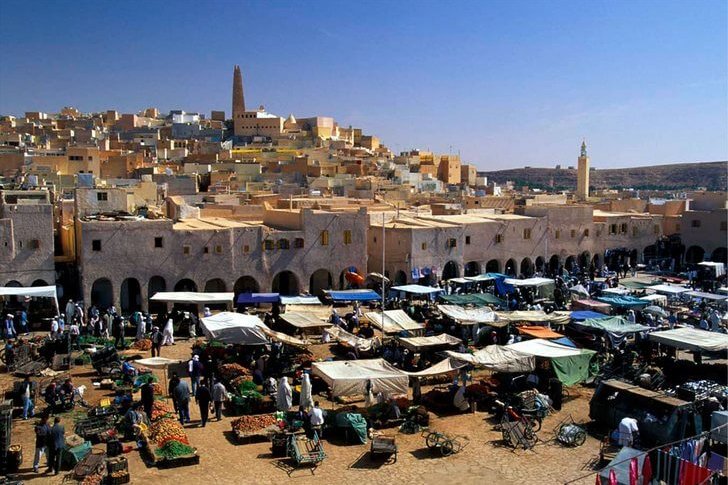
Tipaza
The ancient Phoenician city, which from the VI century. BC. served as an outpost and was of strategic importance. After the capture of these territories by Rome, Tipaza was a Roman colony for 150 years. After the destruction by the barbarians in the VI century. the city was reborn. The Arabs who replaced the Byzantines named the settlement Tefassed (heavily destroyed). On the territory of the modern city, tourists can see the ruins of the amphitheater, baths, Christian basilicas.
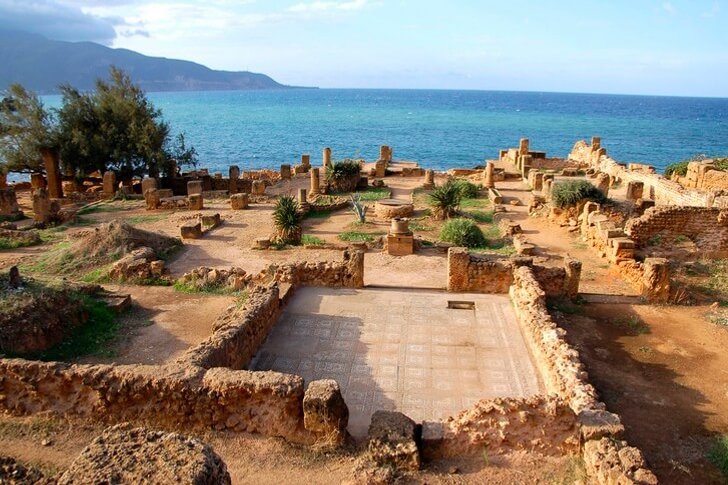
Royal Mausoleum of Mauritania
The tomb of the Moorish ruler Juba II and his wife Cleopatra Selene II is located in Tipaza. The building absorbed a particle from the ancient Phoenician and Christian culture. The structure has a pyramidal shape with hidden entrances hidden in the wall. The mausoleum is considered quite valuable and interesting cultural object, it resembles the mausoleum of the first emperor of Rome Augustus, built in the Eternal City.
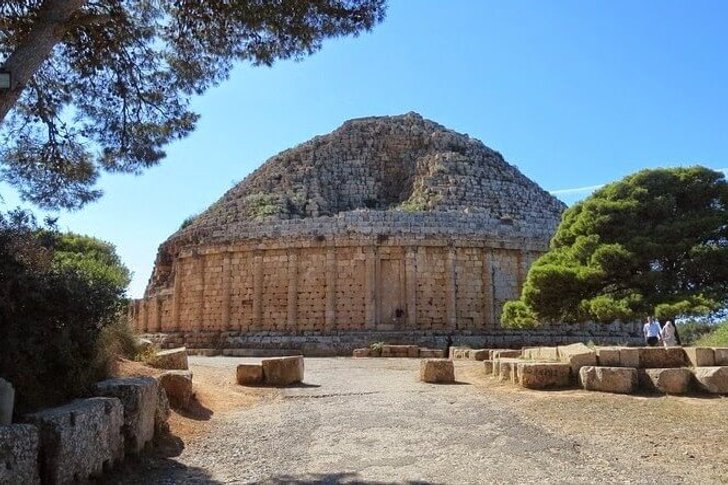
The ancient Roman city of Timgad
It was founded by Emperor Troyan at the turn of the 1st and 2nd centuries. in the foothills of the Atlas Mountains. Timgad was built for the permanent residence of retired Roman legionaries who served 25 years. Initially, it was assumed that 15 thousand people would be accommodated there, but very soon the city grew to 50 thousand. The citizens of Timgad had equal rights with the citizens of Rome itself. A fortress wall was erected to protect against the Berber nomads.
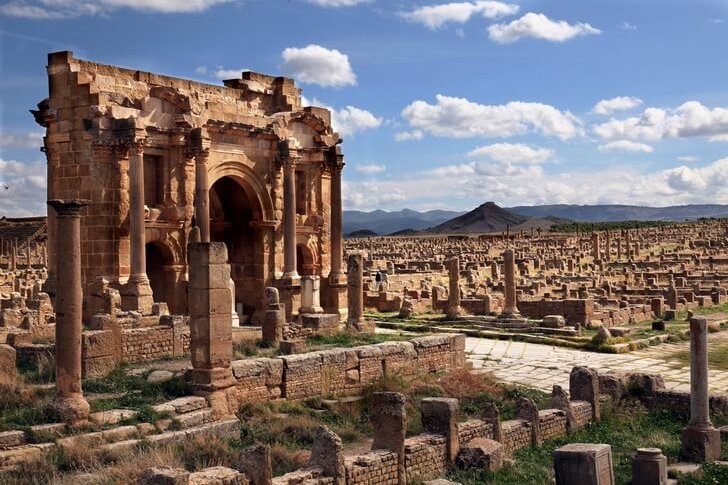
Cala Beni Hammad
The former capital of the Hammadid dynasty, is located in the northern province of Algiers. At present, the city is a ruin against the backdrop of picturesque mountains. Cala Beni Hammad is listed by UNESCO as showing the true picture of the Muslim fortified city. The city dates back to 1007, it was founded by Hammad, the son of the founder of Algeria. From here came the Berber Hammadid dynasty.

Ancient Roman city Dzhemila
Another Roman city for legionary veterans in Algeria. Here, after a long and exhausting service in the army, former soldiers received land allotments and broad civil rights. Until the capture by the barbarians in 431 AD. villas were built here, gardens bloomed and olive groves rustled. Due to climate change and the onset of the desert, people gradually left these places. In the XX century. active excavations began in Jemil.

Fort Santa Cruz
One of the three fortresses of the port city of Oran, connected by tunnels to other forts. Santa Cruz was built by the Spaniards in the 16th century, later occupied by the Turks and at the beginning of the 19th century. was conquered by the French. The fortress was the most powerful urban structure. Its architecture dominated the typical Moorish development of residential and administrative buildings. The territory of the fort has been preserved quite well, now there are guided tours.
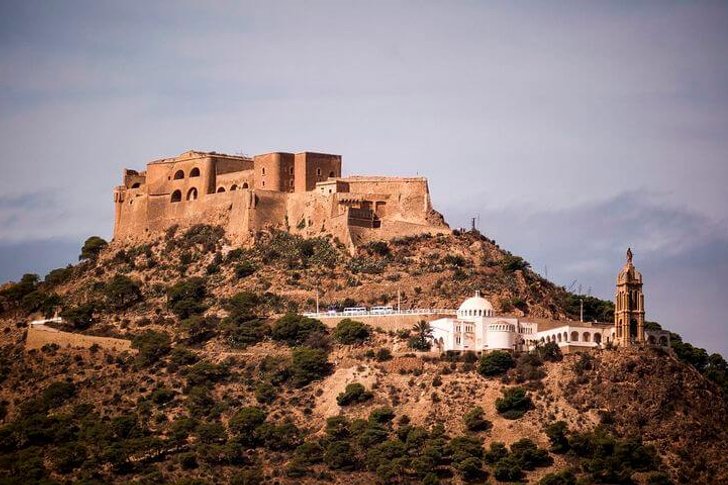
atlas mountains
Mountain range, part of which runs through the territory of Algeria. It separates the Mediterranean coast from the Sahara. The Atlas mountain system has been known since the time of the Phoenician campaigns, its description can be found in the works of ancient thinkers dated to the 2nd century BC. BC. The mountains consist of three ranges, several internal plateaus, and plains. They are considered the highest in Northwest Africa.
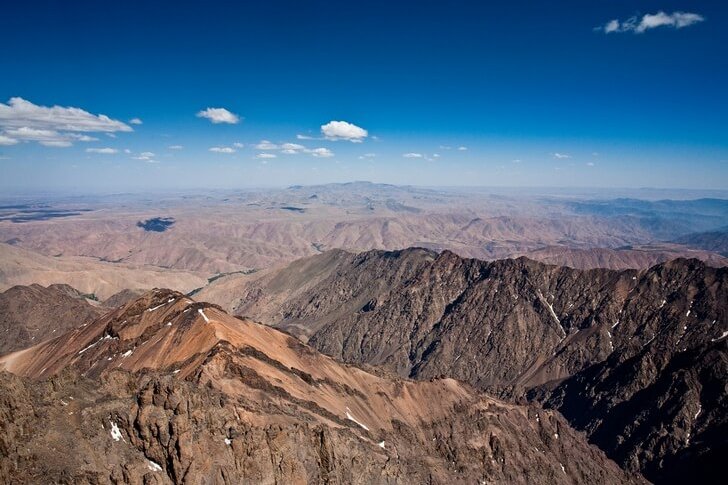
Giurgiura National Park
Djurdjura is a mountain range that is part of the Atlas Mountains. The nature protection zone appeared here in 1925, later a national park was formed. In the park, tourists can enjoy picturesque views of peaks covered with lush forests, pine and oak groves. The most popular place among travelers in Dzhurdzhura is the winter resort of Tikdzha, which is located at an altitude of more than 1.5 km. above sea level.

Tassilin-Ajer Plateau
Algerian national park in the southeastern part of the country. The plateau is interesting because its fantastic landscapes resemble the surface of a distant planet. There are also ancient caves with thousands of rock paintings, which can be used to study human evolution and its features in this particular area. Sandstone stone arches, bizarre pillars and hard rock sheds are scattered on the plateau.
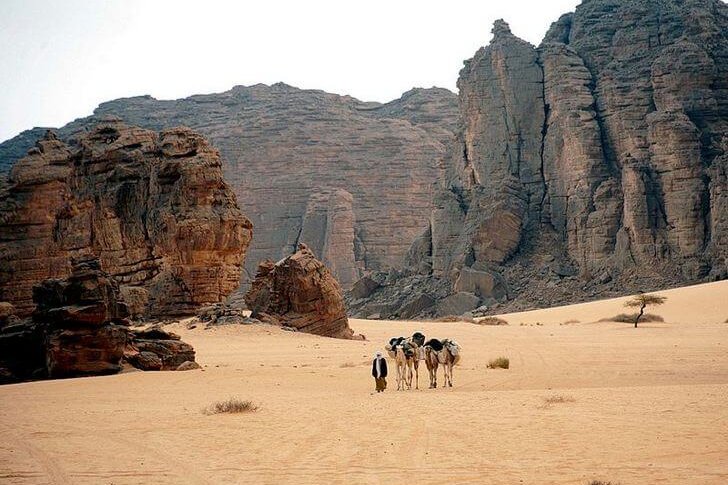
Ahaggar Highlands
A mountain range in the Sahara, around which the Tuareg settled since ancient times. According to the myths of this tribe, Ahaggar was formed as a result of the battles of fabulous genies, which froze in carved poses and turned into rocks. The main city of the Tuareg is located in the southwest of the highlands. Here you can visit the museum of local culture and get acquainted with the customs of the true masters of the desert (as the Tuareg call themselves).
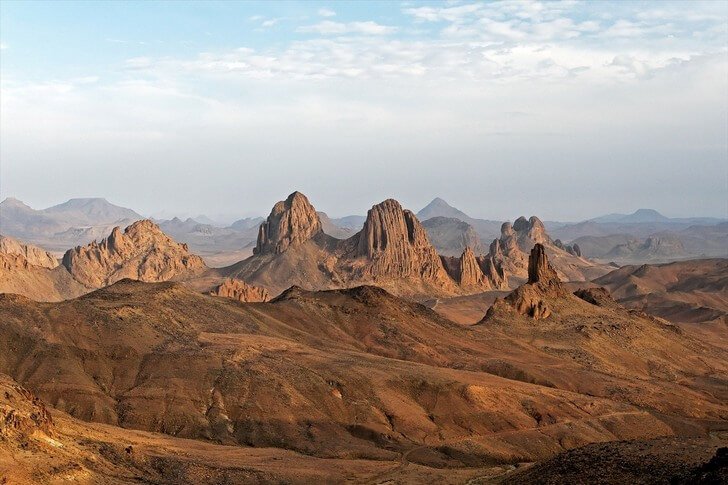
Thermal springs Hammam Mescutin
A unique natural phenomenon, which is a mineral formation of various shades and shapes and water flowing down them. The temperature of the water in the bath can reach 97 C°. It is believed that the waters of Hammam Mescutin can cure diabetes. The place is very popular with the local population, there are almost no foreign tourists here, although enough hotels have been built in the vicinity.

Sahara Desert
The largest desert on Earth, stretching across the territory of several African states. In Arabic, the word "Sahara" is used to refer to any desert. The length of the desert from East to West is about 5000 km., From South to North - an average of 1000 km. The landscape is quite diverse - there are sand dunes, salt marshes, rocky plateaus, highlands, mountain ranges, formations of volcanic rocks.
